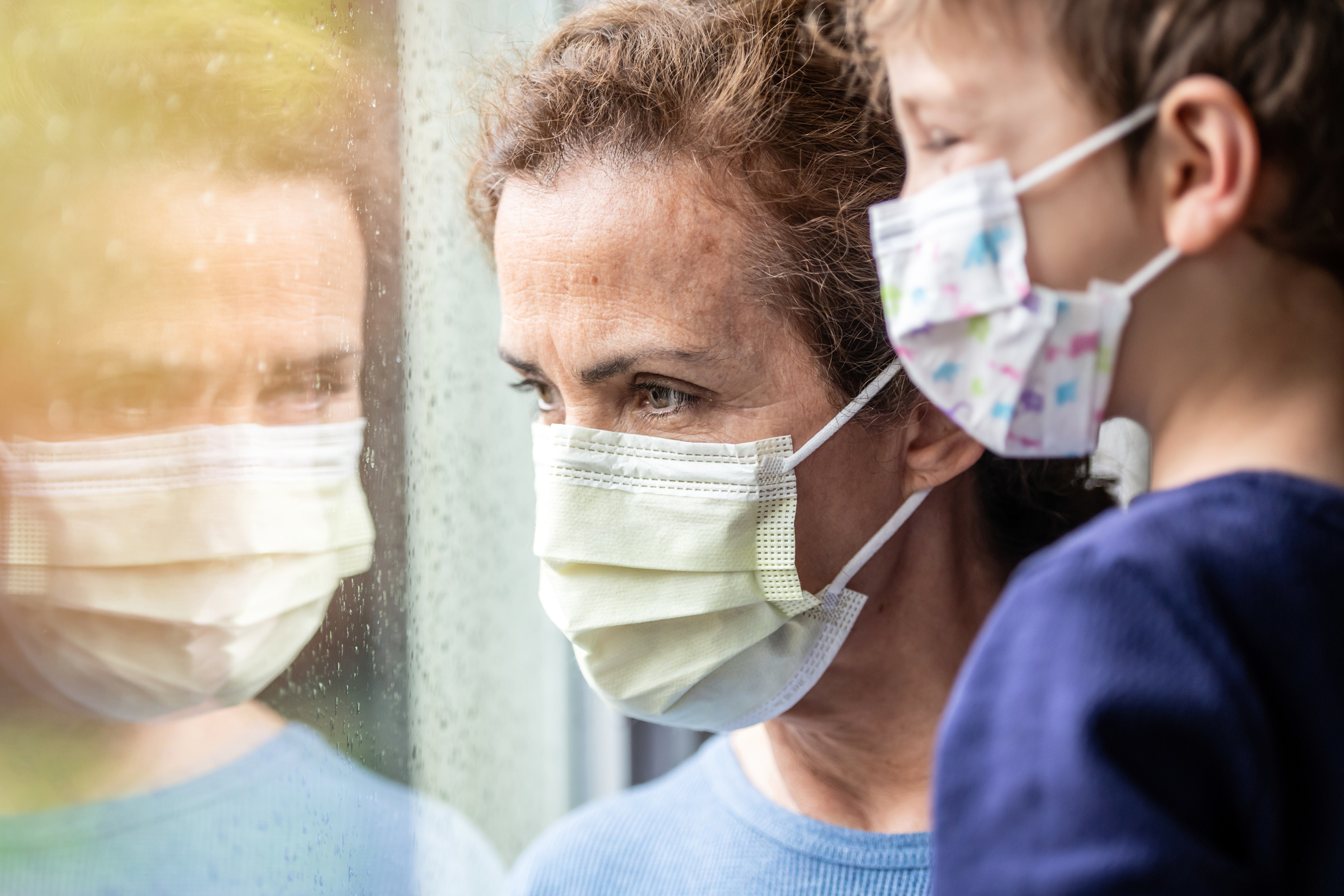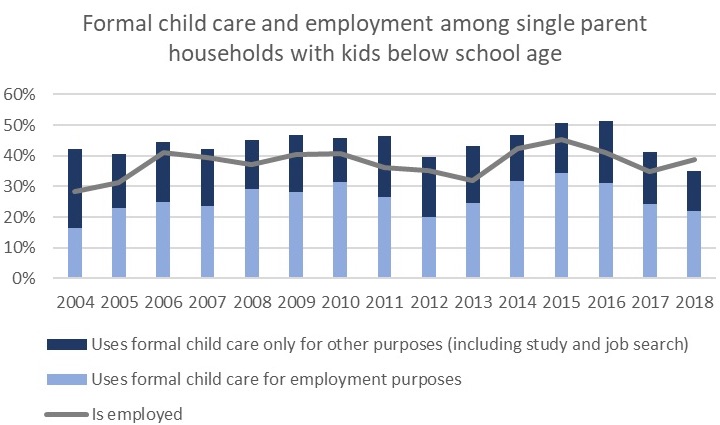
Business & Economics
Are you OK Australia?

The HILDA Survey suggests single-parent households in Australia are abandoning formal childcare as they face greater poverty rates
Published 20 November 2020
One of the starkest and long-standing trends in labour markets around the world, is the growing participation of mothers.
Facilitating this shift, for the last two decades in Australia, more and more young kids have been attending formal childcare.
So, it’s very surprising that the Household, Income and Labour Dynamics in Australia (HILDA) Survey is showing a steep fall in the use of formal childcare among single-parent households, which by and large are headed by women.

While it is unclear what’s driving this trend, it’s potentially a sign that many single parents simply can’t afford formal childcare. If so, it risks kicking off a vicious cycle where a lack of money, a lack of childcare and a lack of employment opportunities trap single parents in entrenched disadvantage.
The annual HILDA Survey of 17,000 Australians found that back in 2016, some 52 per cent of single-parent households with kids aged under four, used formal childcare. But in 2018, that share has dropped to just 35 per cent. The same trend isn’t observed among coupled parents.
There doesn’t appear to be an obvious explanation for this phenomenon.

Business & Economics
Are you OK Australia?
The change in usage patterns comes after childcare subsidies had just been substantially increased in 2018 for the majority of low and medium-income households, reducing their out-of-pocket expenses.The increased subsidies were effective from July 2 and the HILDA Survey was carried out from July 31 to February 10, 2019.
There also appears to be no reduced need for care – the employment levels among single parents has remained stable while childcare usage has dropped.
It may be that many single parents are instead relying on informal childcare arrangements. HILDA indicates that there is a growing number of single parents with kids below school age, who have a job but no formal care arrangement.
In 2018, only 52 per cent of all employed single parents with young kids, had a formal care arrangement, compared to an average of 70 per cent over the previous ten years.
This is a worrying new trend.
It sets up single parents for a host of logistical problems in juggling multiple care arrangements and unreliable access to care, which can jeopardise their employment in the longer term.

What’s more, because it is unregulated, there is no way to enforce quality standards of informal care arrangements, potentially limiting children’s social, behavioural and cognitive development if they miss out on formal care.
Both points are especially problematic because, in Australia just like in other countries, single-parent families who don’t access formal childcare are the most disadvantaged. They are more likely to live in remote or regional areas of Australia, in socially and economically disadvantaged locations, and the parent in these families can have lower educational qualifications.

Business & Economics
Separated parents getting better at shared care?
There is a strong link between families that don’t or cannot access formal childcare, and families affected by poverty and lack of employment.
Where does this link stem from? Is formal childcare unattainable for low-income workers, causing them to seek alternate care arrangements, which ultimately makes it harder to stay in work?
HILDA tracks households over time, which allows us to shine some light on this question. It means we can observe not only who does or doesn’t use formal childcare in a given year, we can also see that family’s circumstances and childcare usage in the year prior.
When we analysed single parent households over time, we found two important facts.
First, the falling rates of formal childcare usage among single parents observed in the HILDA survey, isn’t just about a shift over time, where fewer and fewer single new families begin to engage with or use the formal care sector.
To a large extent, it is families that already had a formal care arrangement in place, but cancelled their enrolments before their kids reached school age.

And second, just before these families stopped using childcare, they tended to be somewhat poorer than their counterparts who continued to use it – but not as poor as the families are who don’t use childcare in the long run.
While it is not iron-clad proof, this finding does indeed point towards a vicious cycle where lack of income (whether it is because the single parent is unemployed, or employed on a low wage) prompts families to opt out of childcare, worsening their economic position down the track even further because work opportunities are more constrained.
| Single parents with kids not at school… | Average poverty rate 2016-2017 |
|---|---|
| …who used formal childcare 2016-2017 | 11 per cent |
| …who used formal childcare 2016-2017 but stopped in 2017-2018 | 18 per cent |
| …who didn’t use formal childcare 2016-2017 | 25 per cent |
In parallel with single parent’s decreasing use of childcare, the HILDA Survey had already been showing a substantial increase in relative poverty rates among single-parent households – from 15 per cent in 2016 to 25 per cent in 2018, well above the 10.7 per cent overall rate of relative poverty.
Given the devastating effects of COVID-19, we can expect that the number of single-parent families entering a cycle of poverty and entrenched disadvantage will only grow further.
It appears that even after the recent increase in subsidies, our childcare system is badly set up to help them find a way out.
This article uses unit record data from the Household, Income and Labour Dynamics in Australia (HILDA) Survey. The HILDA Project was initiated and is funded by the Australian Government Department of Social Services (DSS) and is managed by the Melbourne Institute of Applied Economic and Social Research (Melbourne Institute). The findings and views reported in this article, however, are those of the authors and shouldn’t be attributed to either DSS or the Melbourne Institute.
Banner: Getty Images